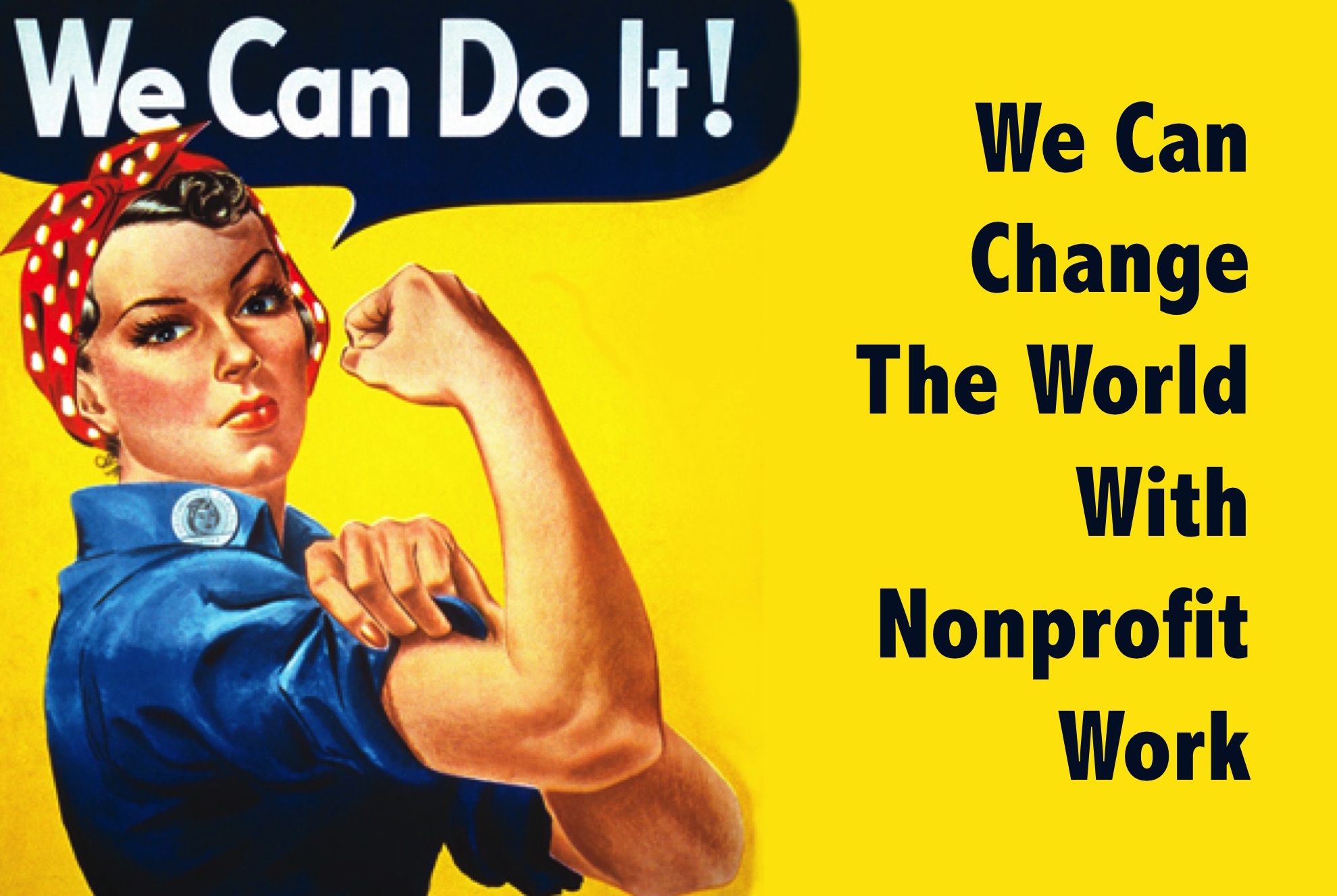Too many people still don’t know or underestimate the labor and economic force of the nonprofit sector. The reality is that nonprofits provides 11.4 million jobs, accounting for 10.3% of the United States total workforce in 2012 (Bureau of Labor Statistics, 2014). Between 2000 and 2010 the nonprofit employment grew at about 18%, a faster rate than the overall U.S. economy (The Independent Sector – The Urban Institute, 2012). The nonprofit workforce is the third largest of all U.S. industries behind retail trade and manufacturing (Center for Civil Society Study, 2012).
The University of San Francisco’s MNA Program is located A few minutes away from Rosie the Riveter Museum, a National landmark commemorating the power of women in the workforce during WWII (Rosie Visitor Center). The museum, with the weekly presence of the few still living ‘Rosies’ is a powerful reminder of what is possible during difficult times and with the determination of workers (mostly women) serving the country for a better future for all. The missions of our nonprofit organizations with its ambitious objectives mobilize many women and men to make the world a better place through health, education, advocacy, and many other necessary human services (Top NP Missions).
As we celebrate Labor Day in the Unites States (AKA May Day in the rest of the world), we recall the importance of integrating hard work with justice and dignity in the workplace. This is why nonprofits generally do not just strive to work efficiently and effectively for their services but also advocate for adequate policies and recognition of human rights, labour rights, environmental rights and other specific rights like disability, children, indigenous, etc. Integrating production with justice has been at the root of labor struggle and continues to be a priority in the nonprofit sector along social movements and unions seeking worker’s justice and dignity. This integration is inherently true in our social missions and it is gradually much better integrated in our own nonprofit workplaces (Overtime Regulations 2016).
The nonprofit sector, also known as the voluntary sector, is also rapidly professionalizing and requiring appropriate normative, comparative standards and specialized educational programs (see NACC). Of course the main drive for nonprofit workforce remains its dedication to the cause and ‘transformational leadership.’ But the value-based and mission-driven characteristics of ‘transformational leadership’ cannot be sustainable unless based on a relation of justice, dignity and fairness. In other words, the transformational spirit and dedication of the nonprofit workforce is and must be based on clear standards of transactional (contractual) leadership that aims at promoting fairness by avoiding exploitation while stimulating creativity and social innovation (Tavanti, 2008).

